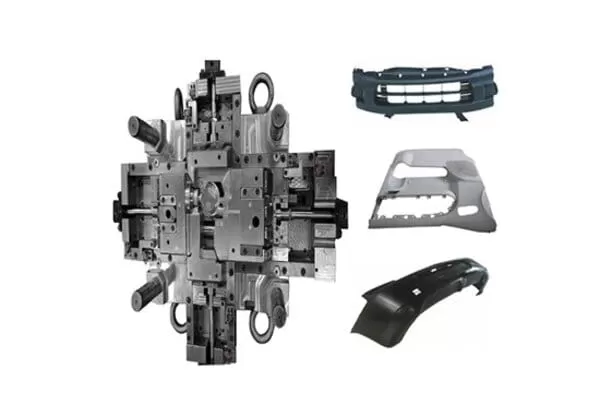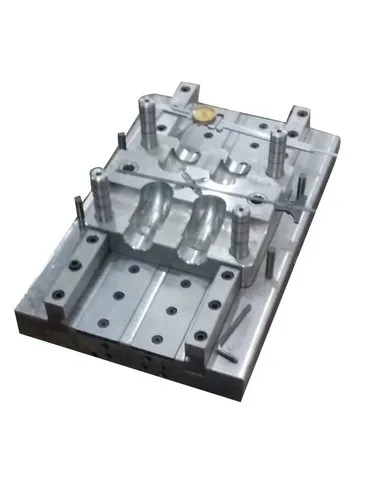The automotive industry is constantly striving for innovation, not only in vehicle performance but also in sustainability. One of the key areas where this trend is evident is in the use of sustainable and recycled materials in automotive molds. These materials help reduce the environmental impact of vehicle manufacturing, minimize waste, and promote circular economy principles. Here’s an overview of how sustainable and recycled materials are being used in automotive molds and their benefits.
1. Overview of Automotive Molds
Automotive molds are essential components in the manufacturing process, used to shape parts for vehicles, including dashboards, bumpers, interior panels, and exterior body parts. Traditionally, molds are made using metal alloys such as steel and aluminum, which are durable and provide precise detailing but come with significant environmental and energy-related costs.
With the growing demand for eco-friendly practices, there has been a shift towards incorporating sustainable and recycled materials in the molding process. This not only helps reduce the carbon footprint of vehicle production but also reduces dependency on virgin raw materials.
2. Types of Sustainable and Recycled Materials
Recycled Plastics: The automotive industry uses various recycled plastics, such as polyethylene terephthalate (PET), polypropylene (PP), and acrylonitrile butadiene styrene (ABS), in the production of interior and exterior parts. Recycled plastics offer high strength, durability, and aesthetic quality, making them suitable for use in automotive molds. PET, for example, can be sourced from post-consumer products like plastic bottles.
Recycled Metals: Aluminum and steel are the most commonly recycled metals used in automotive molds. Aluminum, due to its lightweight properties and strength, is frequently used in manufacturing parts like engine components, wheels, and frame structures. Steel, on the other hand, is used in a variety of components where strength and rigidity are crucial. Recycling metals saves energy and reduces the need for mining raw materials, leading to a decrease in emissions.
Biodegradable Plastics: In addition to recycled plastics, there is a growing interest in biodegradable plastics derived from renewable sources, such as polylactic acid (PLA). These materials, while still in development for broader automotive applications, are being used in certain components where traditional plastic might not be necessary, thus reducing long-term environmental impact.
Natural Fiber Composites: Another sustainable material gaining attention is natural fiber composites, which use fibers from plants (like hemp, flax, and jute) combined with biodegradable resins. These materials are lightweight, durable, and offer a lower environmental impact than traditional synthetic composites. Natural fiber composites are already being used in some automotive applications, including door panels and interior panels.
3. Benefits of Using Sustainable and Recycled Materials in Automotive Molds
Environmental Impact Reduction: By incorporating recycled and sustainable materials, automakers can significantly reduce their carbon footprint. Recycling materials like plastics, metals, and composites uses less energy compared to producing virgin materials and helps to divert waste from landfills. This contributes to a more sustainable lifecycle for the vehicle.
Cost Savings: Recycled materials are often less expensive than their virgin counterparts, offering manufacturers the potential for cost savings. Moreover, these savings can be significant when large quantities of materials are involved in mass production. Additionally, using recycled metals or plastics can reduce the cost of raw materials and disposal fees associated with waste.
Circular Economy Contribution: The use of recycled materials in automotive molds aligns with the principles of a circular economy, where materials are reused, repurposed, and recycled, minimizing waste and reducing the need for new raw materials. This not only reduces the environmental impact but also helps conserve finite resources.
Regulatory Compliance and Consumer Demand: As governments worldwide implement stricter environmental regulations, automakers are under pressure to adopt more sustainable practices. The use of recycled and sustainable materials helps meet these regulations while also appealing to eco-conscious consumers who are increasingly interested in sustainable vehicle options.
4. Challenges in Adopting Sustainable Materials in Automotive Molds
Material Properties: While recycled and sustainable materials offer significant environmental benefits, they may not always match the performance or durability of traditional materials. For example, recycled plastics may have lower strength or higher variability in quality, which can impact the precision required in molding processes. Therefore, ongoing research is required to develop sustainable alternatives that meet automotive industry standards.
Manufacturing Processes: Incorporating sustainable materials into automotive molds can require adjustments to manufacturing processes. This may include changes in mold design, machine settings, and processing techniques to accommodate the unique properties of these materials.
Supply Chain Limitations: The availability and quality of recycled materials can sometimes be inconsistent, leading to supply chain challenges. For widespread adoption, automakers need reliable and consistent sources of recycled materials, which requires investment in recycling infrastructure and material recovery systems.
5. Future Trends in Sustainable Molding Materials
Advanced Recycling Technologies: As recycling technologies improve, the quality and consistency of recycled materials used in automotive molds are expected to improve as well. Chemical recycling, for instance, can break down plastics into their original monomers, allowing them to be reused repeatedly without degradation in quality.
Biocomposites and Green Resins: With the rise of bioplastics and natural fiber composites, we are likely to see more widespread use of these materials in automotive molds. As technology advances, these materials may become more affordable and effective for high-performance automotive applications.
3D Printing with Recycled Materials: 3D printing technologies are emerging as a solution for producing custom molds and automotive components. 3D printing with recycled plastics and metals could further reduce material waste and offer greater design flexibility, which is beneficial for both environmental sustainability and cost-effectiveness.
6. Conclusion
The automotive industry is making significant strides toward incorporating sustainable and recycled materials into molds, reducing environmental impact, and contributing to a circular economy. While there are challenges associated with performance and supply chain reliability, ongoing innovations in recycling technologies and materials science are likely to make these solutions even more viable in the future. As automakers continue to prioritize sustainability, the use of recycled and sustainable materials in automotive molds will play a critical role in shaping the industry’s future.


